Ambalavasi is the name of a Kerala community (not to be confused with
caste) composed of a number of Hindu castes such as Pushpakas (Unni,
Nambeesan, etc.), Chakyars, Moothaths, Ilayaths, Kurukkals, Warriers,
Marars, Nambiars etc. Traditionally, they perform temple related jobs
and art forms.
The term Ambalavasi is derived from two words namely Ambalam (Temple) and Vasi (Inmate). The members of Ambalavasi community were originally dwellers and assistants in the Temples. Since they resided in the premises of temple, they came to known as Ambalavasis, meaning Temple-inmates.
The Ambalavasis were broadly classified into two groups; the sacred thread wearing castes and the non threaded castes.
Among the former are included Chakyar, Nambiar, Unni, Nambeesan, Ilayathu, Mūttatu (Moosad), Warrier, Marayar (Marar), Pothuval, Pisharody, Nambidi, Adikal etc. These threaded castes perform the Upanayanam, wear the sacred thread "Yajñopavītam"(Pūnūl) and adhere to Gayatri mantra. They are known as Yajnopaveetadharis.
The latter include Warriers, Pothuvals, Pisharodys, Marars etc.
Each of the Ambalavasi castes claims to be greater than the other, but historically speaking they all had more or less equal status. Wearing the sacred thread doesn't mean that the former is a greater caste. It can be said that Mūttatu headed the threaded while Pisharody headed the non threaded Ambalavasis.
Pushpakas
Pushpakas are lower class Brahmins in Kerala. The Pushpaka Brahmins show attributes of both the Brahmins and Kshatriyas. Hence this caste is generally considered as an intermediate caste between Brahmins and Kshatriyas. They are commonly known as Arddhabrahmanar i.e. Semi-Brahmins. The Pushpakans are believed to be the lowerclass of brahmins in Kerala. Although they wear the Yajnopaveetam or the sacred brahminical thread and perform the Upanayanam, they were not considered Brahmins in the true sense of the term, but superior Ambalavasis.
There are various sub-castes within the Pushpaka caste. These include Nambeesans, Unnis, Nambis and Nambidis. The surname Nambeesan is used in North Kerala while Unni is used in South Kerala. In the Middle Kerala, both surnames are common.
Males of pushpakas served as teachers in Pathasalas, as assistants to the main priest and as lamp-bearers (vilakkeduppukaar), while females served as garland makers and as cleaners of inner cortyard of temples.
As per the famous Parasurama myth, the warrior sage Bhargava Rama (Parasurama) is said to have brought a group of Brahmins to Kerala of which 64 families were allowed to conduct the ceremonies in the temples. They became the Namboothiris. The remaining families of Brahmins became their assistants and were not allowed inside the Sree Kovil or main shrine of the temple. They came to known as Pushpaka Brahmins as their work was associated mainly with flowers.
Muthatu and Elayathu
Also known as Moosad, they are considered the highest of the Ambalavasi castes and are said to be degraded Brahmins, the cause of degradation being that they tattooed themselves with Shaivite images. The Elayathu was considered the lowest of Malayali Brahmins and was the priest of the Nairs.
Varyar
Varyar(Warrier or Variyar or Varier) are considered to the sub caste of Brahmins.Varyers were temple administrators. The word "Variyar" has originated from Tamil, meaning a person who maintains the accounts (in short, "Accountant"). In the pre-Namboodiri era of Keralam, the agricultural property of every village belonged to a village temple. There was an elected committee to administer the temple and the properties. The Manager or Accountant of this committee was called Variyar, and he was accountable to the Committee. Managing the temple and providing materials required for "nivedyam," cleaning vessels used for the preparation of "nivadyam" and "puja", daily maintenance of the temple premises, etc., were responsibilities of the Variyar's family. Warrier ladies were known as Warasyars
Marar
Marars are considered the lowest of Ambalavasis. This is so because the Marars are the higher classes of the Maarans who are mentioned in the Jati Nirnayam as among the eighteen castes known as Nairs. However these higher classes who were solely engaged in temple service were subsequently elevated and considered Ambalavasis in Malabar, Cochin and North Travancore. In Central and South Travancore these higher classes, known as Asupanis are still included among the remaining Maarans and hence considered Nairs. The customs and ceremonies of the Marars are the same as the Nairs, including pollution after death for 16 days, though the lifestyle is typically Ambalavasi.
Pisharody
The Pisharodys have originated from a Brahmin who was on the verge of becoming a Sanyasin as per the then existent customs but ran away in the last moment.That is also the reason why Pisharodys did not burn their dead. Another story about the origin of Pisharodies is that they are the Hindus converted from Buddhist religion in the period of Sankaracharya. The origin of the name is traced from the name Bhikswaradiakal, associated with Buddhism in Kerala. Pisharody ladies were known as Pisharasyars or Sharasyars.
)
The term Ambalavasi is derived from two words namely Ambalam (Temple) and Vasi (Inmate). The members of Ambalavasi community were originally dwellers and assistants in the Temples. Since they resided in the premises of temple, they came to known as Ambalavasis, meaning Temple-inmates.
The Ambalavasis were broadly classified into two groups; the sacred thread wearing castes and the non threaded castes.
Among the former are included Chakyar, Nambiar, Unni, Nambeesan, Ilayathu, Mūttatu (Moosad), Warrier, Marayar (Marar), Pothuval, Pisharody, Nambidi, Adikal etc. These threaded castes perform the Upanayanam, wear the sacred thread "Yajñopavītam"(Pūnūl) and adhere to Gayatri mantra. They are known as Yajnopaveetadharis.
The latter include Warriers, Pothuvals, Pisharodys, Marars etc.
Each of the Ambalavasi castes claims to be greater than the other, but historically speaking they all had more or less equal status. Wearing the sacred thread doesn't mean that the former is a greater caste. It can be said that Mūttatu headed the threaded while Pisharody headed the non threaded Ambalavasis.
Pushpakas
Pushpakas are lower class Brahmins in Kerala. The Pushpaka Brahmins show attributes of both the Brahmins and Kshatriyas. Hence this caste is generally considered as an intermediate caste between Brahmins and Kshatriyas. They are commonly known as Arddhabrahmanar i.e. Semi-Brahmins. The Pushpakans are believed to be the lowerclass of brahmins in Kerala. Although they wear the Yajnopaveetam or the sacred brahminical thread and perform the Upanayanam, they were not considered Brahmins in the true sense of the term, but superior Ambalavasis.
There are various sub-castes within the Pushpaka caste. These include Nambeesans, Unnis, Nambis and Nambidis. The surname Nambeesan is used in North Kerala while Unni is used in South Kerala. In the Middle Kerala, both surnames are common.
Males of pushpakas served as teachers in Pathasalas, as assistants to the main priest and as lamp-bearers (vilakkeduppukaar), while females served as garland makers and as cleaners of inner cortyard of temples.
As per the famous Parasurama myth, the warrior sage Bhargava Rama (Parasurama) is said to have brought a group of Brahmins to Kerala of which 64 families were allowed to conduct the ceremonies in the temples. They became the Namboothiris. The remaining families of Brahmins became their assistants and were not allowed inside the Sree Kovil or main shrine of the temple. They came to known as Pushpaka Brahmins as their work was associated mainly with flowers.
Muthatu and Elayathu
Also known as Moosad, they are considered the highest of the Ambalavasi castes and are said to be degraded Brahmins, the cause of degradation being that they tattooed themselves with Shaivite images. The Elayathu was considered the lowest of Malayali Brahmins and was the priest of the Nairs.
Varyar
Varyar(Warrier or Variyar or Varier) are considered to the sub caste of Brahmins.Varyers were temple administrators. The word "Variyar" has originated from Tamil, meaning a person who maintains the accounts (in short, "Accountant"). In the pre-Namboodiri era of Keralam, the agricultural property of every village belonged to a village temple. There was an elected committee to administer the temple and the properties. The Manager or Accountant of this committee was called Variyar, and he was accountable to the Committee. Managing the temple and providing materials required for "nivedyam," cleaning vessels used for the preparation of "nivadyam" and "puja", daily maintenance of the temple premises, etc., were responsibilities of the Variyar's family. Warrier ladies were known as Warasyars
Marar
Marars are considered the lowest of Ambalavasis. This is so because the Marars are the higher classes of the Maarans who are mentioned in the Jati Nirnayam as among the eighteen castes known as Nairs. However these higher classes who were solely engaged in temple service were subsequently elevated and considered Ambalavasis in Malabar, Cochin and North Travancore. In Central and South Travancore these higher classes, known as Asupanis are still included among the remaining Maarans and hence considered Nairs. The customs and ceremonies of the Marars are the same as the Nairs, including pollution after death for 16 days, though the lifestyle is typically Ambalavasi.
Pisharody
The Pisharodys have originated from a Brahmin who was on the verge of becoming a Sanyasin as per the then existent customs but ran away in the last moment.That is also the reason why Pisharodys did not burn their dead. Another story about the origin of Pisharodies is that they are the Hindus converted from Buddhist religion in the period of Sankaracharya. The origin of the name is traced from the name Bhikswaradiakal, associated with Buddhism in Kerala. Pisharody ladies were known as Pisharasyars or Sharasyars.



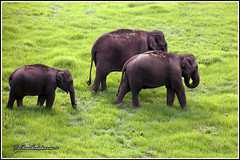
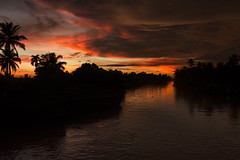

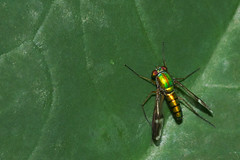
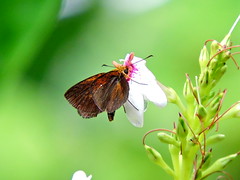
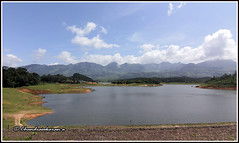
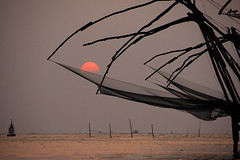
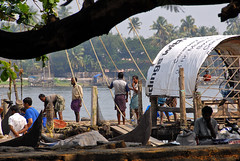

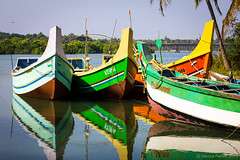
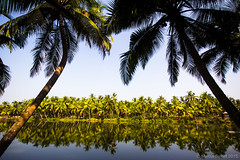

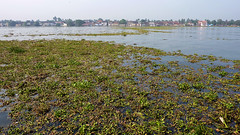
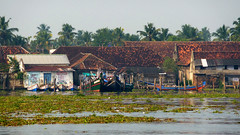


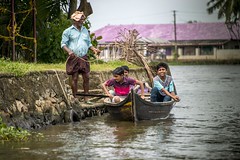
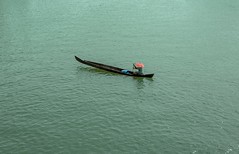
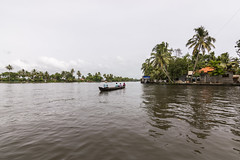
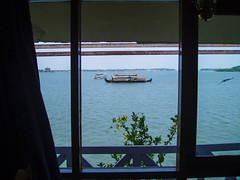
Nonsense
ReplyDeleteha ha what a joke,nambiars are nothing but nairs,,there are no kshtriyas in kerala ,nairs are nagavanshis and naga kshtriyas.
ReplyDeleteexpect brahmins all are shudras in an eye of brahmins.
nambiars are nairs and some are Descendants of nair brahmin relation,if u want a simple english term then its bastard